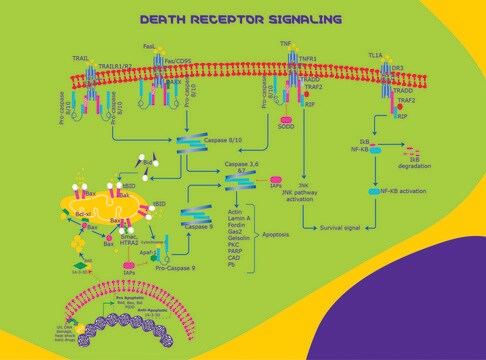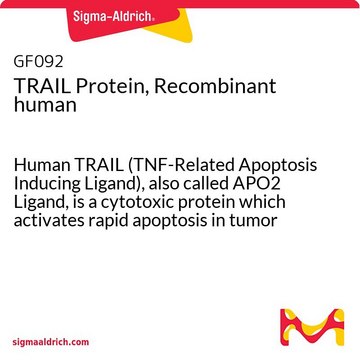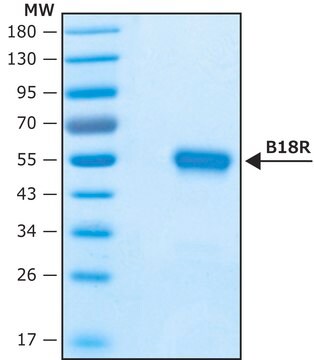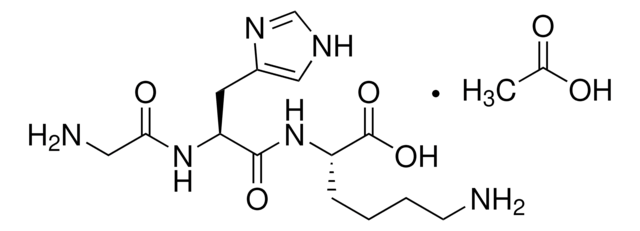SRP6238
TRAIL murine
recombinant, expressed in E. coli, ≥95% (SDS-PAGE)
Sinônimo(s):
Apo2 Ligand, TL2, TNF-related apoptosis-inducing Ligand, TNFSF10
About This Item
Produtos recomendados
fonte biológica
rat
recombinante
expressed in E. coli
Ensaio
≥95% (SDS-PAGE)
Formulário
lyophilized powder
peso molecular
20 kDa
embalagem
pkg of 10 μg
pkg of 50 μg
Impurezas
<1 EU/μg endotoxin (LAL test)
nº de adesão UniProt
Condições de expedição
wet ice
temperatura de armazenamento
−20°C
Informações sobre genes
mouse ... TRAIL(22035)
Descrição geral
forma física
Reconstituição
Código de classe de armazenamento
11 - Combustible Solids
Classe de risco de água (WGK)
WGK 1
Ponto de fulgor (°F)
Not applicable
Ponto de fulgor (°C)
Not applicable
Escolha uma das versões mais recentes:
Certificados de análise (COA)
Lamentamos, não temos COA para este produto disponíveis online no momento.
Se precisar de ajuda, entre em contato Atendimento ao cliente
Já possui este produto?
Encontre a documentação dos produtos que você adquiriu recentemente na biblioteca de documentos.
Nossa equipe de cientistas tem experiência em todas as áreas de pesquisa, incluindo Life Sciences, ciência de materiais, síntese química, cromatografia, química analítica e muitas outras.
Entre em contato com a assistência técnica







